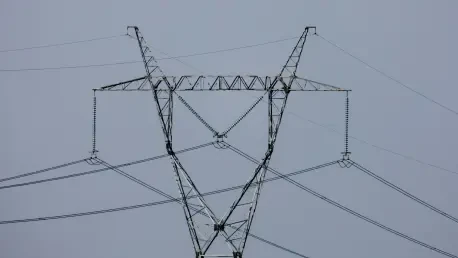PJM, a regional transmission organization responsible for managing the electric grid across 13 states and the District of Columbia, serves an impressive 67 million people with a mission to maintain reliability and efficiency in an ever-evolving energy sector. On July 30, the PJM Board of Managers approved a series of critical updates to transmission projects under the Regional Transmission Expansion Plan (RTEP), signaling a robust strategy to tackle emerging challenges and ensure grid stability. These modifications are not just routine adjustments but a reflection of a forward-thinking approach to address system needs, optimize costs, and adapt to changing demands. From infrastructure upgrades to strategic project cancellations, the changes aim to fortify the power network against current and future pressures. This article explores the depth of these updates, shedding light on how PJM is proactively shaping a resilient grid to meet the needs of millions while balancing economic and operational priorities in a dynamic energy landscape.
Building a Stronger Grid Through Strategic Objectives
The core of PJM’s recent RTEP updates lies in a steadfast commitment to enhancing grid reliability and operational efficiency amid a backdrop of shifting energy requirements. The approved modifications focus on resolving violations of reliability standards, boosting market performance, and aligning with public policy mandates. By incorporating technical evaluations and stakeholder perspectives through the Transmission Expansion Advisory Committee (TEAC), PJM ensures that each decision is grounded in comprehensive analysis and addresses both immediate concerns and long-term forecasts. This systematic approach helps create a grid capable of handling today’s demands while preparing for tomorrow’s uncertainties, reflecting a deep understanding of the complex interplay between technology and infrastructure needs in the energy sector.
A significant element of these updates is the delicate balance between expanding project scopes and controlling costs to maximize value. Certain initiatives have grown to accommodate new pressures, such as supporting the surge in data center development, while others have been trimmed or entirely canceled to prevent redundant efforts and unnecessary expenses. This strategic calibration demonstrates PJM’s dedication to allocating resources wisely, ensuring that investments are directed toward critical areas without sacrificing the grid’s overall robustness. The emphasis on cost-effective solutions alongside reliability enhancements highlights a pragmatic yet innovative stance in managing one of the largest power networks in the nation.
Diving Into Specific RTEP Project Changes
The breadth of PJM’s RTEP updates spans multiple planning windows, showcasing a detailed and holistic effort to strengthen the grid. Within the 2024 RTEP Window 1, notable additions include the installation of new 500 kV structures near Black Oak substation to facilitate seamless line interconnections, alongside cost corrections at Doubs substation for greater financial precision. Additionally, redundant breaker replacements at Ox substation were eliminated to avoid overlap with earlier projects, illustrating a keen focus on efficiency in planning and execution. These targeted adjustments not only address specific technical needs but also set a precedent for streamlined resource use across the board, ensuring that every project contributes meaningfully to grid stability.
Further modifications in the 2022 RTEP Window 3 and other regional efforts, such as the Elmont-Chickahominy 500 kV line, reveal PJM’s adaptability to both immediate fixes and sustained growth. Design shifts toward more cost-efficient materials and expanded scopes to meet data center-driven demand underscore responsiveness to contemporary challenges. Projects like line rerouting in the Lockridge area and circuit rebuilding in New Jersey to meet elevated standards show a tailored approach to diverse regional requirements. By addressing unique local constraints while maintaining a unified goal of reliability, PJM demonstrates a nuanced strategy that bridges short-term solutions with long-term infrastructure goals, reinforcing the grid’s capacity to serve varied communities effectively.
Meeting Modern Demands with Forward-Looking Plans
A prominent trend within the RTEP updates is the emphasis on accommodating emerging demands, particularly those driven by technology infrastructure such as data centers. The Elmont-Chickahominy project, for instance, saw significant scope increases to handle a rise in delivery point requests, reflecting the growing influence of digital expansion on energy needs. Concurrently, cost adjustments in offshore wind initiatives and other regional projects ensure the grid can support evolving energy consumption patterns. PJM’s agility in adapting to field evaluations and canceling outdated efforts, like those in the Farragut-Hudson area, highlights a proactive mindset in maintaining relevance and reliability, ensuring that resources are focused on areas of greatest impact and future potential.
Beyond immediate adaptations, the RTEP updates signal a broader vision for future readiness by integrating public policy goals and market efficiency into planning. The cancellation of non-essential projects and the strategic realignment of others, such as the partial scope retention in Transource Project 9A, demonstrate a commitment to eliminating inefficiencies while prioritizing critical upgrades. This forward-looking perspective ensures that the grid not only meets current operational standards but also anticipates upcoming challenges, from technological advancements to environmental considerations. By aligning investments with projected needs, PJM positions itself as a leader in grid management, capable of sustaining service quality for millions while navigating the complexities of a rapidly changing energy landscape.
Reflecting on a Path to Sustained Grid Resilience
Looking back, the PJM Board’s approval of transmission project modifications under the RTEP framework marked a pivotal moment in bolstering grid reliability for a vast population. The meticulous adjustments across various planning windows tackled pressing reliability issues, responded to modern demands like data center growth, and achieved cost efficiencies through strategic cancellations. These efforts culminated in a balanced approach that reinforced the grid’s resilience while serving 67 million people with unwavering dedication. Moving forward, stakeholders can anticipate continued progress by engaging with detailed project insights and exploring PJM’s role in regional energy planning. The focus should remain on supporting these updates through collaboration and informed decision-making, ensuring that the grid evolves in step with technological and societal shifts, paving the way for a sustainable and dependable energy future.









